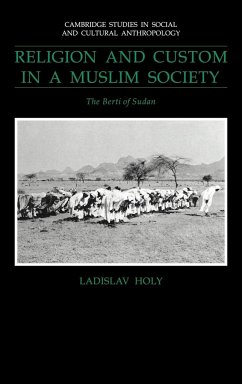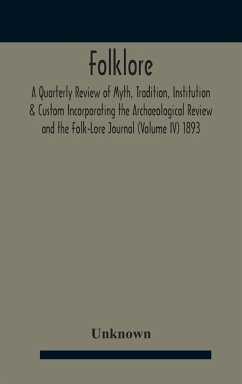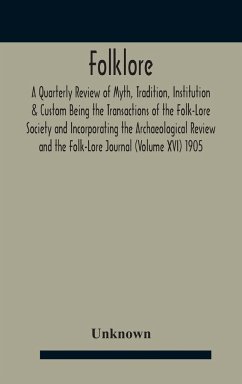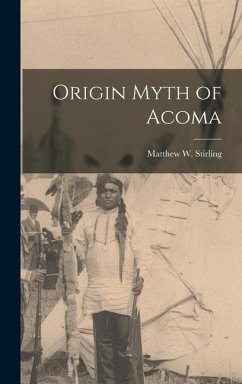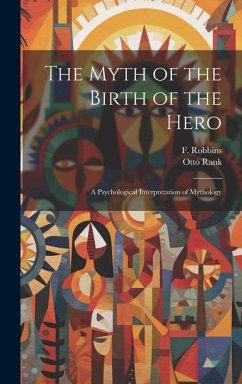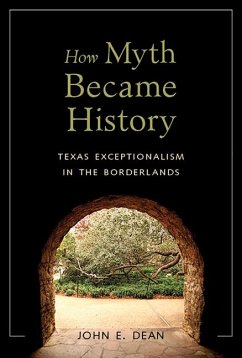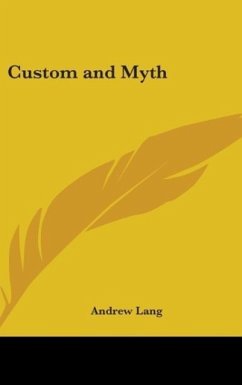
Custom and Myth
Versandkostenfrei!
Versandfertig in 1-2 Wochen
36,99 €
inkl. MwSt.

PAYBACK Punkte
18 °P sammeln!
1885. While best known for his translations of classical literature and as a collector of folk and fairy tales, Lang also wrote poetry, biographies, histories, novels, literary criticisms and even children's books. Lang was one of the first to apply anthropological findings to the study of myth and folklore. His versatility was also shown in his valuable works on folklore and on primitive religion. The earliest of these works was Custom and Myth. Contents: The Method of Folklore; the Bull-Roarer; The Myth of Cronus; Cupid, Psyche, and the Sun-Frog; A Far-Travelled Tale; Apollo and the Mouse; S...
1885. While best known for his translations of classical literature and as a collector of folk and fairy tales, Lang also wrote poetry, biographies, histories, novels, literary criticisms and even children's books. Lang was one of the first to apply anthropological findings to the study of myth and folklore. His versatility was also shown in his valuable works on folklore and on primitive religion. The earliest of these works was Custom and Myth. Contents: The Method of Folklore; the Bull-Roarer; The Myth of Cronus; Cupid, Psyche, and the Sun-Frog; A Far-Travelled Tale; Apollo and the Mouse; Star Myths; Moly and Mandragora; The Kalevala; The Divining Rod; Hottentot Mythology; Fetichism and the Infinite; The Early History of the Family; and The Art of Savages. See other titles by this author available from Kessinger Publishing.




